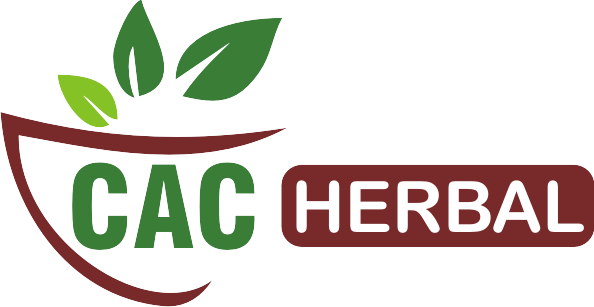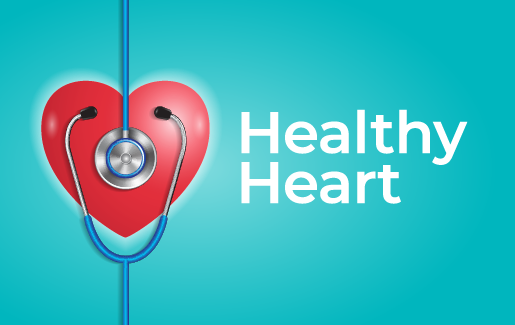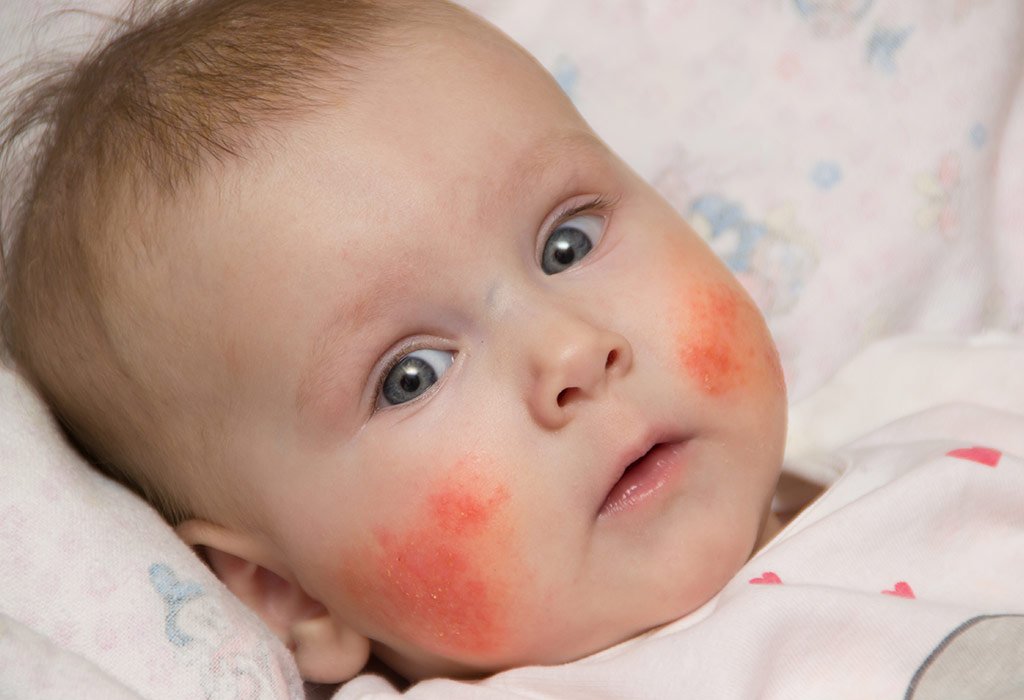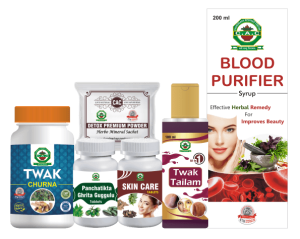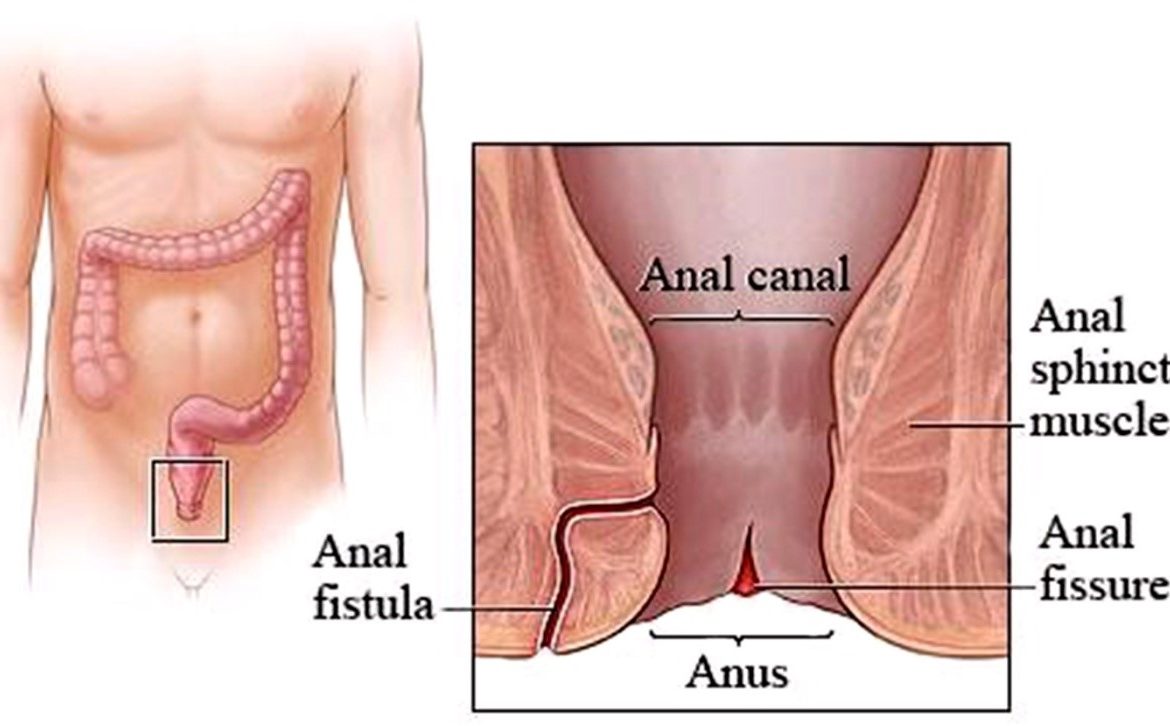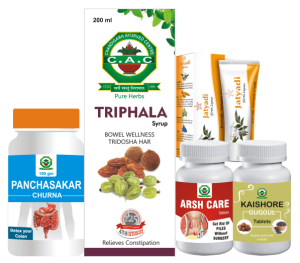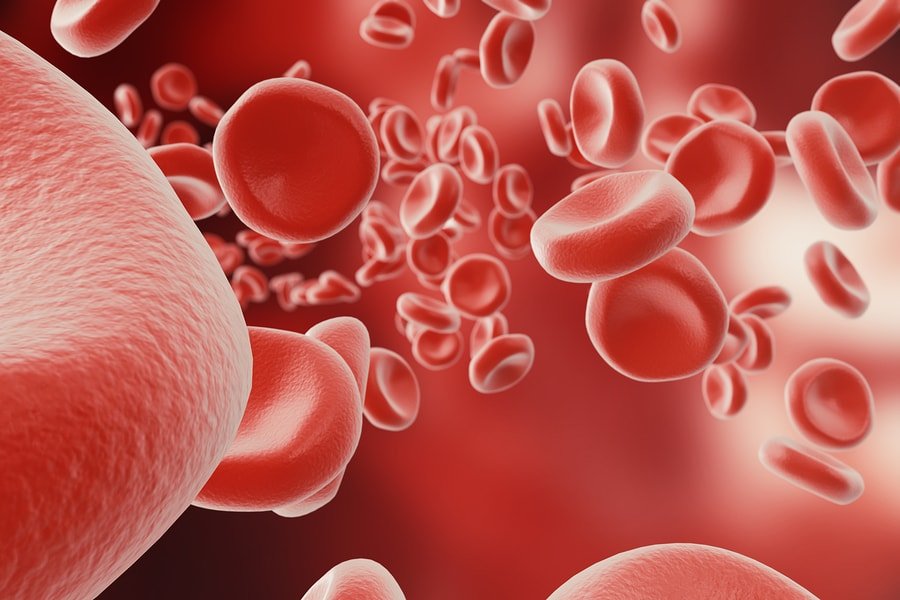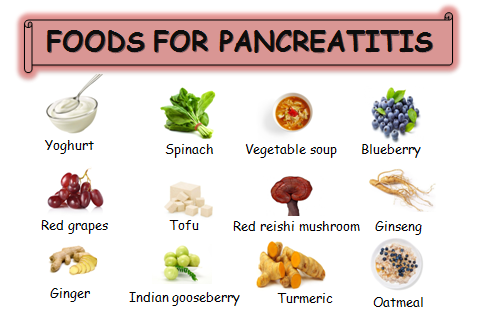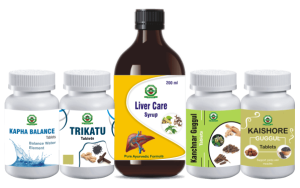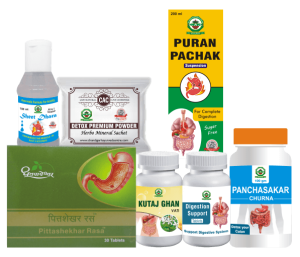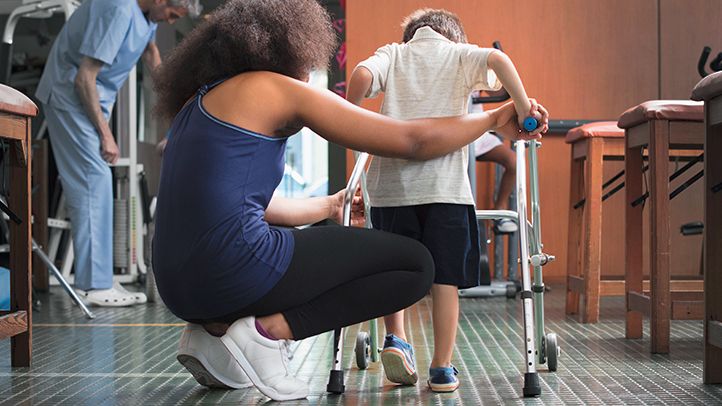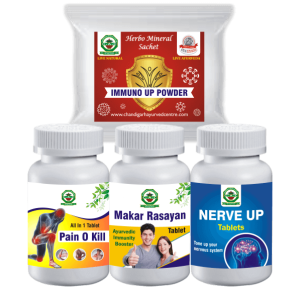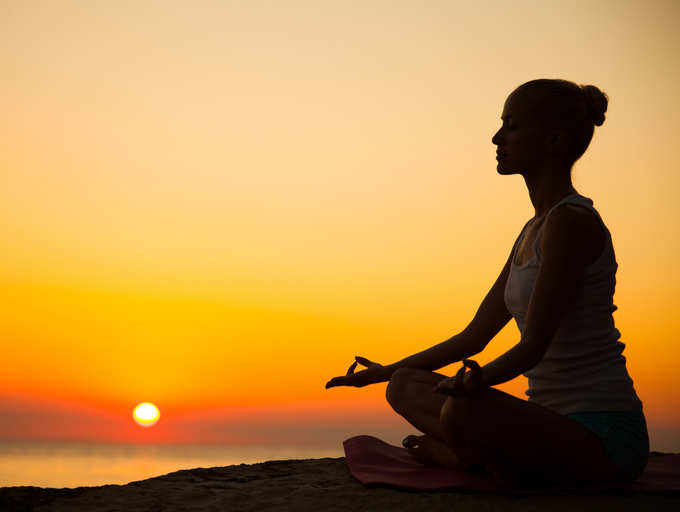Author Archives: admin
NATURAL WAYS TO BOOST IMMUNITY IN CHILDREN
- 27 Sep, 2021
- Posted by admin
- 0 Comment(s)
- Parents are always caring to their children so as a caring parent, you might be looking for the immunity boosting method for your Kids.
- The delta variant has caused a lot of anxiety among parents and Kids are the heart of the fears around a possible third wave of Covid-19.
- When you go out let suppose in a park, it is impossible to keep your child away from germs.
- Thankfully, babies produce their own antibodies and some are transferred to them through their mother to fight against various infections but their immune system got fully developed by the time they’re 7 or 8 years old.
- But it depend how they live and the lifestyle the parent set up for them. It can either weaken or strengthen the growing immune system of your Kid.
- One should follow a healthy lifestyle that includes getting enough rest, eating a well balanced diet and getting regular exercise to avoid stress, it helps to strengthen the immune system of your little ones.
So, here are some measures to improve your kid’s immunity and help reduce their chances of getting sick.
1. Breastfeeding-
Mother’s milk contains “Colostrum” (i.e.loaded with immune, growth and tissue repair factors) and it is considered as the gold standard in building immunity of your baby. Babies who are breastfed for at least 6 months have a better developed immune system and seem to be less prone to infections and allergies in some studies.
2. Follow the immunization schedule-
The parents should follow the vaccination schedule advised by the pediatrician. Ensure that your kid gets the required vaccine shots on time. This is vital for all children, especially those with asthma and other chronic health issues.
3. Intake of a healthy diet for your Kids-
Provide your child with a rainbow i.e. serving vegetables and fruits of different colors.
For example- Carrots, green beans, oranges, berries, Avocados, bell peppers and broccoli those are rich in antioxidants or phytonutrients. A diet that is rich in phytonutrients helps to enhance immunity and intercellular communication, repair DNA damage from exposure to toxins, detoxify carcinogens and alter estrogen metabolism.
Some essential nutrients for children for a good healthy-
- Calcium- It helps build strong bones and teeth. For ex. Milk, Yoghurt, cheese, Eggs, Spinach, Broccoli etc.
- Fat- It helps to create energy, helping hand in the brain develop, good for healthy skin and hair and protects against infections.
- Folate- It is very essential as it helps cells to divide.
- Iron and magnesium- Red meat, Liver, Shellfish, whole grains, nuts , bean etc.
- Protein- Meat,Poultry,Fish, Eggs, Nuts, Beans and dairy products.
- Carbohydrates-Breads, Cereals, Rice, Crackers, Pasta and potatoes etc.
- Zinc and Fiber- Broccoli, whole grains, Lentils, nut etc.
- All the Vitamins like Vitamin A,B,C,D,E and K rich diet- Some examples are Citrus fruits, Strawberries, Papaya, Mangoes Melons, Carrots, Tomato, Apricots, Fish oils etc.
- Food items with excess of sugar and junk food should be avoided or limited t o an occasional treat rather than a regular feature.
- Try to get your child to eat 5 servings of fruits and veggies a day. (A serving is about two tablespoons for toddlers, 1 cup for older kids.)
4. Maintain a healthy gut-
- Your baby’s stomach health is very important for a healthy immune system. As what you feed your babies it will ultimately act on the whole body.
- Majority of all infections arise from stomach. Intake of food rich in probiotics strengthens the intestinal tract and aids the growth of good bacteria. For Ex- Intake of Yoghurt is a great way to include probiotics in your daily diet.
- For infants, you can mix little quantity yoghurt to pureed fruit on the other hand elder children can enjoy carrot or cucumber sticks with a yummy yoghurt dip.
5. Get enough sleep-
In Ayurveda, Nidra or sleep plays an important role for the healthy immune system and growth.
Your child should sleep for approx. how many hours?
| Age | Hours of Sleep |
| New born | 15 to 18 hours |
| 1 to 8months | 14 to 15hours |
| 8to 15months | 12 to 15hours |
| 15month to 3years | 12 to 14hours |
| 3-6 years | 11 to 13 hours |
| 7to 12 years | 10 to 11 hours |
| Teenagers | 9+ hours |
You should set routine for bedtime could include a light massage or reading together for some time. A well-rested child is energized and better equipped to keep infections at bay.
6. Be active-
- Yoga and Pranayama or Exercise plays a huge role in overall fitness.
- Plan an hour of activity with your kid in the park or an indoor can work wonders for your child’s and your health and boost up the immune system.
- Exercising together or playing a sport as a family is fun and amazing way to bond and stay fit.
7. Maintain Good Hygiene-
- Good hygiene is really important to keep germs and infections away.
- Train your children with good habits like washing hands before and after eating, after playing and after using the toilet so that it become a habit.
8. Proper care while moving outdoors-
- Move outdoors with proper mask and sanitizer and keep an eye towards your child. With all the precautions and guidelines take your child for fresh air and vitamin D, required by each cell in the body and to build up immunity.
- Do ensure proper hands and feet washing after coming back to indoors.
9. Avoid Passive smoke-
- The ill-effects of passive smoke are well known, as the toxins present in it can kill healthy cells.
- Children can inhale more smoke if it is present in the environment as Kids breathe at a faster rate than adults. Thus, a smoke-free space has great benefits for your child and everyone.
10. Avoid the use of antibiotics unless necessary
- Antibiotics act fast but taking it as a first step for your child may not always be the best idea.
- Though Antibiotics wipe out harmful bacteria but it also wipe out the good bacteria, thus compromising the immunity of the body.
11.Swarna Prashana Sanskar-
- It is an ancient ayurveda practice to increase immunity and promote healthy growth both physically and mentally.
- In this process the child is administered in Pushya nakshatra, it is a formula prepared with gold particles and it is considered to be a unique practice in Ayurveda.
- It can be given from Birth and up to the 16years of age. It is given with clarified butter and honey in a dose of two drops up to 6 months and four drops after 6 months. It can be given daily for a minimum of 30 days and maximum of 180 days.
Natural Remedies for Healthy Heart
- 27 Sep, 2021
- Posted by admin
- 0 Comment(s)
DESCRIPTION
- The heart is a muscular organ, situated just behind and slightly left of the breastbone.
- Heart is approximately the size of a closed fist.
- The heart pumps blood through arteries and veins and this system is called the cardiovascular system.
HEART CHAMBER – Heart has four chambers:
- The right atrium – it receives blood from the veins and pumps it to the right ventricle.
- The right ventricle – it receives blood from the right atrium and pumps it to the lungs, where it is loaded with oxygen.
- The left atrium – it receives oxygenated blood from the lungs and pumps it to the left ventricle.
- The left ventricle (the strongest chamber) – pumps oxygen-rich blood to the rest of the body.
Heart Conditions:
- Coronary artery disease
- Stable angina pectoris
- Unstable angina pectoris
- Myocardial infarction (heart attack)
- Arrhythmia (dysrhythmia):
- Congestive heart failure
- Cardiomyopathy
- Myocarditis
- Pericarditis
- Pericardial effusion
- Atrial fibrillation
- Pulmonary embolism
- Heart valve disease
- Heart murmur
- Endocarditis
- Mitral valve prolapse
- Sudden cardiac death
- Cardiac arrest
Heart valve – The heart has four valves that keep blood moving the right way by opening only one way and only when they need to. The four valves of the heart are:
- Tricuspid
- Mitral
- Pulmonary
- Aortic
Risk factors – Risk factors for developing heart disease include:
- Age – Older age increases the risk of damaged and narrowed arteries and weakened or thickened heart muscle.
- Sex – Men are generally at greater risk of heart disease than women. The risk for women increases after menopause.
- Family history – this increases the risk of coronary artery disease.
- Smoking – smoke released carbon monoxide that can damage the inner lining of blood vessels and making people more prone to develop atherosclerosis. Heart attacks are also more common in smokers.
- Poor diet – A diet that is rich in fat, salt, sugar and cholesterol can contribute to the development of heart disease.
- High blood pressure – Uncontrolled blood pressure can result in hardening and thickening of arteries, narrowing the vessels through which blood flows and cause heart attack.
- High blood cholesterol levels – it increase the risk of plaque formation and atherosclerosis.
- Diabetes – Diabetes increases the risk of heart disease. Both conditions have similar risk factors, such as obesity and high blood pressure.
- Obesity – Excess weight is the risk factor of heart diseases.
- Physical inactivity – Lack of exercise associated with many forms of heart disease and some of its risk factors as well.
- Stress – Unrelieved stress may damage your arteries and worsen other risk factors for heart disease.
Complications – Complications of heart disease include:
- Heart failure
- Heart attack
- Stroke
- Aneurysm
- Peripheral artery disease
- Sudden cardiac arrest
- Prevention
- Don’t smoke.
- Regulate high blood pressure, high cholesterol and diabetes.
- Exercise at least 30 minutes a day.
- Take low in salt and saturated fat diet.
- Maintain a healthy weight.
- Reduce and manage stress.
- Practice good hygiene.
- Deal with depression.
Remedies for a healthy heart
- Whole-wheat bread – take some peanut butter on a slice of whole-wheat bread good to heart. 1 slice of whole-wheat bread has eleven mcg of selenium (an antioxidant mineral) that works with vitamin E to protect your heart.
- Wine – Research finding that drinking a glass of alcohol a day may help in the battle against heart disease.
- Calcium – is another heart-healthy nutrient, and milk is not only a calcium-rich food. There are lots of non-dairy foods that are rich in calcium, such as salmon, figs, pinto beans, and okra. A cup of broccoli can supply 90 mg of calcium.
- Chicken – Three ounces of chicken will give you 1/3 of your daily requirement for vitamin B6, is a necessary nutrient for maintaining heart health.
- Salmon – Adding fatty fish reducing the risk of heart disease. 3ounces salmon fish meets daily requirement for vitamin B12, vitamins that helps to keep heart healthy, and it’s a good source of omega-3 fatty acids, which lower the level of triglycerides and reduce blood clots that block arteries in the heart.
- Spinach – spinach help to fulfill folic acid needs and it also provide vitamin, B6 and B12. Folic acid can help prevent heart disease.
- Strawberries – these are a good source of vitamin C which is antioxidant important to maintaining a healthy heart. Strawberries are also a good source of fiber and potassium, both important to heart health.
- Sweet potatoes– Sweet potatoes fulfill daily requirements of vitamin A, which is a heart-protecting nutrient, help to maintain healthy heart.
- Garlic – It is full of antioxidants, garlic seems to be able to lessen plaque buildup, reduce the incidence of chest pain, and keep the heart healthy. It also bear mild anticoagulant property that helping in blood thinning.
- Red Yeast Rice – This is an ancient remedy made by mixing fermented rice with yeast to lower the cholesterol level.
- Flax seed – Flax seed is rich in omega 3 fatty acid, which is often a heart smart diet choice. Omega 3s help to lower blood pressure and inflammation. They also contain fiber-rich plant compounds called lignans that reduce cholesterol and plaque buildup in the arteries.
- Vitamin K2 – Vitamin K2 is frequently linked to better heart health. Research showed that diets rich in vitamin K like green leafy, green veggies helped to reduce the risk of death in people who were at high risk for heart disease. It helps to prevent calcium deposition in the arteries and blood vessels.
- Cayenne (Lal Mirch) – Cayenne is used to spice up curries and it is good for heart. This spice contains capsaicin that improve the elasticity of the blood vessels, helping them to stay healthy. It reduces the chances of blood clot formation and also lowers the levels of LDL cholesterol. Overall it improves the functioning of the cardiovascular system and keeps blood pressure in normal range.
- Garlic – Ginger is an herb that promotes heart health. Research shown that ginger is capable of preventing formation of clots, improving blood circulation and lowering LDL cholesterol levels.
- Green Tea – Green tea is rich in epigallocatechingallate which is anticoagulant. This antioxidant improve the health of the cells that form the innermost lining of the blood vessels and the heart. Research shown that green tea reduces the formation of bad cholesterol and prevents rise in blood pressure. Regular consumption keep the heart and blood vessels in good shape.
- Arjuna Bark (Kaugach) – Arjuna tree bark contains several important chemical constituents such as tannins, triterpenoid saponins and flavonoids and these have been found to have a cardio-protective action. According to Ayurveda, Arjuna is strong cardio tonic drug. It also help to lower LDL cholesterol, raise HDL cholesterol in body and maintained blood pressure.
WHAT IS ATOPIC ECZEMA? HOW TO CURE IT NATURALLY
- 27 Sep, 2021
- Posted by admin
- 0 Comment(s)
- Atopic Eczema is also known as atopic dermatitis; Atopic denotes allergic or hypersensitive reaction and eczema is characterised by dry, rough, itchy, flakey, inflamed, and irritated skin.
- It is a most common condition that makes your skin red, inflamed, swelling, vesicle formation (minute blisters) and extremely itchy. It is common in children but can be present in all age groups.
- Unfortunately, there is no satisfactory treatment available in modern medical practice except antihistamines and topical steroids but fortunately Ayurveda helps a lot in controlling and treating this problem in a natural way.
SYMPTOMS-
It is associated with the following symptoms-
- Itching or burning at the affected area especially during night time.
- Presence of Brown and red colored spots on feet, hands, wrists, throat, chest and face.
- Some people may experience pimples on your face with pus.
- Thick, rough and hardness of skin may be present.
- Feeling of discomfort on itching, skin becomes more sensitive and further increase the chance of infection.
- Acute atopic dermatitis produces weeping, oozing plaques of extremely itchy skin.
- Chronic atopic eczema appears as thickened and elevated plaques of scaling skin.
CAUSES
If you have a healthy skin, it helps to retain moisture and protects you from harmful bacteria, irritants and allergens.
Atopic Eczema may be due to Genetical factor – A variation of gene that affects the skin’s ability to provide the protection. So, it allows your skin to be affected by certain factors like environmental factors, irritants and allergens. In some children, food allergies may also cause eczema.
Ayurvedic view in Atopic dermatitis
In Ayurveda perspective the Atopic Eczema is having similarity with the symptoms of Vicharchika, which is a type of kshudrakustha and had been seen since ancient period of time with the following symptoms-kandu or itching, Srava or Discharge, Pidika or vesicles and Shyava varna or discoloration of skin.
Based on the clinical presentations, Vicharchika is often correlated to eczema.The line of treatment for vicharchika in Ayurveda is Shodhana therapy or Prificatory measures and shaman aushadhis or Medication.
RISK FACTORS-
The main risk factor for Atopic eczema is that the person having family or personal history of eczema, allergies, hay fever or asthma.
COMPLICATIONS
The major complications of Atopic Eczema are listed below-
- Asthma and hay fever
- Chronic itchy, scaly skin
- Neurodermatitis (lichen simplex chronicus)
- Increase the risk of skin infections through bacteria and viruses, including the herpes simplex virus.
- Irritant hand dermatitis
- Allergic contact dermatitis.
- Insomnia or Sleep problems
PREVENTION-
Some tips may help you to prevent from bouts of dermatitis (flares) and minimize the drying effects of bathing-
- Skin miniaturization- One should moisturize the skin at least two times a day with Creams, ointments and lotions, petroleum jelly or products that work well for you. This may help you to prevent from development of atopic dermatitis.
- Identify and avoid triggering factors- Triggering factors can worsen the condition. For Example- Sweat soaps or face wash, stress, obesity, detergents, dust and pollen.
- Identifying potential food allergies- Your Infants and children may experience flares from eating some sorts of food items like eggs, milk, soy and wheat.
- Shorten the duration of baths or showers- Use warm, rather than hot water and make limitations while bathing i.e. time should not be more than10 to 15 minutes.
- Use only gentle soaps and detergents- Choosing mild soaps are a good idea for prevention from Atopic Eczema.
- Keep yourself dry- One should dry yourself carefully after bathing with a gentle pat your skin and dry with a Hygienic soft towel and apply moisturizer while your skin is still damp.
AYURVEDA TREATMENT FOR ATOPIC DERMATITIS
CAC prepared special medicinal Kit for the “Atopic Eczema” which is very effective herbo-mineral formula. It promotes your skin health and cures the condition.
It comprises of the following medications-
ECZEMA CARE KIT
| SR. NO. | PRODUCTS NAME | QUANTITY |
| 1. | Detox Premium Sachet | *1sachet twice daily |
| 2. | Panchtikta Ghrit Guggulu | *2tablet twice daily |
| 3. | Blood Purifier Syrup | *2tsf twice daily |
| 4. | Twak Churana | * ½ to 1 tsf twice daily with water |
| 5. | Skin Care Tablet | *2 tablet twice daily |
*The dosage of the above medication may vary from person to person. So it is advisable to take it after consultation with the Doctor.
DETAILED DESCRIPTION OF THE PRODUCT-
-
Detox Premium Powder:
This is a herbo-mineral preparation that contains ingredients like Parwal Pishti, Giloy satv, Shukta Pishti, Kamdudha Ras, Gandhak Rasayan, etc.
Parwal Pishti: This Pishti reduces inflammation, flaking, itching of the skin. The Pishti is composed of natural coral calcium processed with rose water.
Shukta Pishti: It helps to balance the Pitta dosha in the body. All signs and symptoms related to Psoriasis patients are managed with this article.
Giloy Satv: This satv is prepared from the herb Giloy (Tinospora cordifolia). The anti-inflammatory, antioxidant, and analgesic properties of this herb deal with psoriasis easily.
Kamdudha Ras: This herbal-mineral classical preparation balances Pitta dosha in the body.
Gandhak Rasayana: This herbal preparation is used since ancient times for all types of skin disorders.
Tal Sindoor: It contains ingredients like Shuddh parad, Aloe vera, Gandhak, etc that relieve redness in psoriasis patients.
Akik Pishti: This Pishti reduces all types of Pitta related disorder hence it gives good results in psoriasis.
-
Blood Purifier Syrup:
It is ayurvedic syrup that consists of various natural ingredients such as Khadir Chall (Acacia catechu), Manjistha (Rubia cordifolia), Neem (Azadirachta indica), Giloy (Tinospora cordifolia), Harad (Terminalia bellirica), Baheda (Terminalia chebula), Amla (Emblica officinalis), etc. As the syrup purifies the blood by removing excess toxins it is very beneficial in maintaining proper circulation and improves the skin naturally.
-
Panchatikta Ghrita Guggulu:
The tablets are very beneficial in curing skin diseases as it contains the Pitta pacifying ingredients such as Shuddh guggulu (Commiphora mukul), Neem (Azadirachta indica), Amrita (Tinospora cordifolia), Gajapippali (Piper chaba), Shunthi (Zingiber officinalis), etc. The tablet is Tridoshahara, thus is very effective in maintaining the hormonal level in the body.
-
Skin Care tablet:
Skin care tablet is herbo mineral and purely ayurvedic formulation. It contains various herbs like Haridra khand, Panchnimba churna, Panchatikta guggulu, Patol patra, Ajmoda, Khadir chhal, Chirayta, Mulethi, Manjistha, Chopchini, Gandhak, etc. Skin care tablet is a blood purifying. It cools and detoxifies the blood, dissolves obstructions in the blood flow that further increase blood circulation of the skin. It minimises the blemishes, lighten sun tan, delay ageing of skin and heal skin problems. These tablet also act as a skin moistuirizer, Improves blood circulation, Remove blemishes, Reduce itching and burning sensation of skin, Prevent acne and pimples, Relieves leucoderma.
-
Twak Churna:
It is a composition of two main ingredients – Yashtimadhu (Glycyrrhiza glabra) and Manjistha (Rubia cordifolia) that are considered as the best herbs for skin. The churna has anti-inflammatory, antibacterial, and antiandrogenic abilities that treat acne and also prevent it from re-occurrence. The herb Manjistha acts against bacteria such as Propionibacterium acne and Staphylococcus epidermidis which play a role in the development of pimples.
HOW TO CURE ANAL FISTULA WITHOUT SURGERY
- 27 Sep, 2021
- Posted by admin
- 0 Comment(s)
DEFINITION –
This is an infected cavity filled with pus near the anus or rectum. An anal fistula also known as fistula-in-ano is a small tunnel that tracks from an opening inside the anal canal to an outside opening in the skin near the anus. An anal fistula may be the results from a previous or current anal abscess or fistula can also occur without an abscess.
CAUSES –
If the glands inside the anus become clogged this may result in an infection. When the infection is serious, this leads to an abscess. Bacteria, feces, or foreign matter can also clog the anal glands and cause an abscess formation.
CLASSIFICATION –
Fistulas are classified by their relationship to parts of the anal sphincter complex:
- Superaficial fistula
- Intersphincteric fistula,
- Transsphincteric fistula,
- suprasphincteric fistula
- extrasphincteric fistula.
SYMPTOMS
- Anorectal pain,
- Swelling,
- Fever and chills
- Rectal bleeding
- Pus drainage near the anal opening
- Feeling tired and sick
- Redness, soreness and itching around the anal opening
Goodsall rule for the management of fistulas –
Searching for a fistula tract opening in the anal canal, the Goodsall rule is helpful. this rule state that an external opening anterior to a transverse line is associated with straight radial tract into the anal canal, where external opening posterior to the transverse line follows a curved fistulous tract to the posterior mid line of rectal lumen. Horseshoe fistulas associated with anterior and posterior openings in the anal canal.
Diet recommendation in fistula-in-ano (aahar) –
It includes :
- Cow milk, butter, buttermilk, wheat, ghee, rice, green vegetables and regular diet.
Avoid chilies, fried foods and constipating foods.
Lifestyle changes (vihaar)
- Sitz baths with medicated warm water.
Avoid constant sitting and excessive straining during defecation.
Fistula Care Kit
TREATMENT FOR ANAL FISTULA
- Panchasakar Churan – Panchsakar churna is a herbo mineral and purely ayurvedic formulation. It mainly works on your Vata and pitta dosha of your body. It can cure Chronic Constipation and help relieve symptoms of Acidity, indigestion, Belching and colic pain. It acts as a mild Laxative and reduces Bloating. It works very efficiently on a disease named IBS (Irritable bowel syndrome) which is very common nowadays that affects your day to day activities. CAC Panchsakar churna is 100% natural and pure.
Recommended Dosage – Take 1 teaspoonful at bedtime with lukewarm water.
- Triphala Syrup – Triphala has been used in Ayurveda for many years to treat many diseases. As it is used to detoxify the body and also supports the immune system. It is the best anti-inflammatory, anti-bacterial, anti-viral properties. The syrup is made up of Bibhitaki, Haritaki, Amalaki. Each fruit is thought to positively impact’s the body’s three doshas.
Recommended Dosage – Take 2 teaspoonful’s thrice daily.
- Arsh Care Tablet – Arsh care tablet are pure Ayurvedic formulation. These tablets contains pure extract of Reetha Chhilka (Sapindus mukorossi) purified in Cow’s milk. The herb used for formulation of these tablets show antioxidant, anti-inflammatory, laxative properties. It makes your stool soft and help prevent constipation. It is effective against bleeding piles and reduce the pain, burning sensation,irritation while defaecation, treat Fissures, Fistula.
Recommended Dosage – Take 2 tablets twice daily.
- Jatiyadi Ghrita Lepam – It is the best ayurvedic herbal remedy that can be used externally to get relief from the swelling, redness, discomfort, itchiness of the piles. It is very effective in calming the imbalance pitta. This lepam is formed from Patola, Nimba patra, Tuttha, Jati patra, etc. It possesses excellent antimicrobial activity and is very effective in controlling piles and fistula.
Method of Application – Apply the lepam on the affected area.
- Kaishore guggulu Tablet – Kaishore guggulu Tablet is a herbo- mineral 650 MG tablet. CAC Kaishore Guggulu tablet helps in balancing Pitta dosha in our body. Kaishore guggulu is an ayurvedic guggul formulation used for raised uric acid, Blood purification, mild to severe attacks of Gouty arthritis, inflammatory diseases, Wounds, Indigestion, Constipation, Loss of appetite, Diabetic carbuncles etc. Kaishore guggulu contains pure herbal ingredients such as Guduchi (Tinospora cordifolia), Amla (Emblica officinalis), Bibhitaki (Terminalia bellirica), Haritaki (Terminalia chebula), Shuddha Guggulu (Commiphora mukul), Shunthi (Zingiber Officinale), Kalimirch (Piper Nigrum), Pipali (Piper Longum), Vidanga (Embelia Ribes), Nisoth (Operculina Turpethum), Danti Mool (Baliospermum Montanum), Goghrita etc. These herbs helps in regulating metabolism, cleans out toxins from the body and boosts immunity.
Recommended Dosage – Take 1 tablet twice daily
CURE ANAL FISTULA WITHOUT SURGERY –
- Kshara Sutra is a minimal invasive Ayurvedic Parasurgical procedure in the management of Anorectal disorders.
- It is a safe, sure and cost effective treatment for fistula-in-ano, haemorrhoids and other sinus diseases.
- This therapy has been described in Ayurveda by Sushruta, Charak and Vagbhata.
Preparation method of Kshara Sutra –
- 11 coatings of Snuhi latex,
- 7 coatings of Snuhi latex and Apamarga Kshara
- 3 coatings of Snuhi latex and Haridra Churna.
- The pH of Apamarga Kshara Sutra is 9.72.
Application of Kshara Sutra –
- Person with fistula-in-ano anaesthetized with local, spinal or general anesthesia.
- Then a probe is passed through the external opening of the fistula to the internal opening in the anal canal
- Probe taken out through anal opening to outside along with a Kshara Sutra.
- Then both ends of the Kshara Sutra is tied up together.
- The Kshara Sutra is replaced by a new Kshara Sutra after an interval of 1week.
- The Kshara Sutra gradually cuts fistula and heals the tract.
- Finally the whole fistulous tract heals after cutting.
Mechanism of Kshara Sutra in Fistula-in-ano –
- Kshara sutra cutting, curetting, draining and heal the fistulous track.
- It destroy and removes unhealthy tissue
- Promotes healing of the track due to its caustic action.
- Controls infection by its microbicidal action.
- Separate debris and cleaning the wound.
- Facilitate drainage of pus in fistulous tract and help in healing.
- Cutting through the tissues and laying the track open
Advantages of Kshara Sutra Therapy –
- Simple and safe,
- Cost effective,
- Minimal recurrence rate,
- Systemic diseases are also undergoing in this procedure.
- No surgical complications like incontinence, stenosis and stricture are not occur.
Best Diet for Low hemoglobin
- 25 Sep, 2021
- Posted by admin
- 0 Comment(s)
Iron is very important in our body to fight against various diseases. A deficiency of hemoglobin can cause anemia-like illness. Due to deficiency of iron folic acid and vitamin B in the body, our hemoglobin level decreases, due to which we feel tired and weak. Not only can this, due to low hemoglobin level, our kidneys also suffer. Today, we are telling you about such things, which are rich in iron and by consuming them, your hemoglobin level will increase.
1. Beet
Consuming beetroot increases hemoglobin. In addition, if you eat beet leaves, you will get more iron. Its leaves contain three times more iron than beetroot.
2. Amla and berries
Drinking equal amount of gooseberry and berries mixed with juice increases the hemoglobin level.
3. Pistachio
There are 30 different types of vitamins found in pistachios. It is also rich in iron.
4. Lemon
Vitamin C is found in plenty in lemon. This increases hemoglobin in the body.
5. Pomegranate
In addition to magnesium, calcium, vitamin C in pomegranate, iron is also good. Hemoglobin can be increased by drinking two spoons of pomegranate powder in a glass of lukewarm milk.
6. Apple
Apple is very beneficial in diseases like anemia. Consuming it increases the hemoglobin in the body.
7. Spinach
When there is deficiency of hemoglobin, consuming spinach helps to complete its deficiency in the body. Spinach has high iron content.
8. Dry Raisins
Raisins meet the deficiency of vitamin B complex needed to become blood. You can increase your hemoglobin by consuming dry black raisins rich in iron.
9. Fig
Figs contain vitamin A, B1, B2, calcium, iron, phosphorus, manganese, sodium, potassium and chlorine. By soaking two figs in water at night, drinking water in the morning and eating figs, the hemoglobin level can be increased.
10. Cooked Guava
Eating ripe guava does not cause hemoglobin deficiency in the body.
11. Banana
Consuming bananas with honey or gooseberry juice can increase the hemoglobin levels.
12. Sprouts
After waking up in the morning, eating lemon juice mixed with sprouted grains like moong, gram, moth and wheat etc. increases the hemoglobin level.
13. Almonds
10 grams of dry roasted almonds contains 0.5 mg of iron. Apart from this, almonds also contain calcium, magnesium and calories are only 163. Hemoglobin deficiency can be overcome by taking it.
14. Cashew
10 grams of cashew contains 0.3 mg of iron. This increases your hemoglobin level.
15. Walnuts
Walnuts have a very good amount of omega-3 fatty acids. Walnuts are found in sufficient amounts of calcium, magnesium fiber and vitamin-B. By consuming it, the deficiency of hemoglobin in your body can be overcome.
16. Basil
Regular intake of basil leaves does not cause hemoglobin deficiency in the body.
17. Molasses and Peanuts
Mix jaggery and peanut seeds daily. Eating it by chewing it will not cause blood loss and hemoglobin level will increase.
18. Mole (Sesame)
Sesamum increases the hemoglobin level in our body. Anemia is cured by eating sesame.
19. Increase Folic Acid Intake
When there is a deficiency of folic acid in the body, the hemoglobin levels in the body start falling. Therefore, if you want the level of hemoglobin to be correct, then you have to include foods that are rich in folic acid. You can include lentils, cabbage, broccoli, almonds, peas and bananas.
20. Drink Natal or Kandali tea
Natal, Kandali or Sisoun are rich in many qualities. It contains Vitamin B, Iron, Vitamin C which can help you in improving the level of hemoglobin. To make Kandali tea, you can boil 2 spoons dry Kandali leaves in a cup of water and drink it.
21. Avoid an iron-destroying diet
There are many diets that can destroy or block iron. Such iron and calcium should never be eaten together. Apart from this, drink more coffee, tea, cola, soda, wine, beer etc. under control.
22. Exercise
Give yourself time for exercise too. If you exercise then the oxygen will be operated properly in the body.
Diet for Pancreatitis Patients
- 25 Sep, 2021
- Posted by admin
- 0 Comment(s)
During the treatment of pancreatitis, the doctor may recommend some dietary restriction, while some dietary may be banned. Many times the diet may also have to be taken with the help of a feeding tube. Know below about the diet which should be avoided and not in pancreatitis.
Diets consumed in the event of pancreatitis:
- Low fat foods
- Short and easy to digest foods
- Fruit juice
- Diet to eat
- Grain
- Fruits and vegetables
- Lean meats and beans that are rich in protein.
- Low fat dairy products.
Foods to stay away from:
- Foods that take time to digest.
- More fat and spicy foods.
- Alcohol consumption.
- Caffeinated beverages
- High fat foods (fried foods, most sweets, and dairy products made from pure milk, fatty pieces of meat, nuts / nuts, and avocados, butter, salad decorations, sour cream, and extra sugar, such as sweets and sweets Beverages).
Measures to avoid pancreatitis
The following measures can be taken to prevent pancreatitis.
- Avoid alcohol and smoking.
- Get children vaccinated at the right time.
- Eat a healthy diet.
- Keep weight under control.
- Exercise regularly.
Yoga and exercise
Walking and dancing.
Choose activities in which there is no risk of stomach trauma, as these can cause more damage to the pancreas.
Yoga
- Gomukhasana
- Paschimottanasan
- Hallasan
- Ardhamatsyandrasana
- Mayurasan
- Padma Bakassan
Curd
The living bacteria present in yogurt are quite effective for maintaining balance in the digestive system. They also help in strengthening the immune system.
Spinach
Spinach has an abundant amount of antioxidants that boost immunity. Spinach can be used as a vegetable by making greens or by mixing potatoes and cheese with it. Spinach juice can also be drunk.
Vegetable Soup
Vegetables are full of antioxidants and are good for the pancreas in every way. Soups also help keep the body hydrated.
Blueberry
The antioxidant present in blueberries destroys the particles present in pancreatitis.
Black Grapes
Black grapes contain important antioxidants. Which are extremely beneficial for pancreatic.
Tofu – Bean Curd
A large amount of fat in the blood can cause pancreatitis. In this case, eating tofu does not spread fat and it is also helpful in quick digestion.
Soya
Pancreatitis can be avoided by using soybean in many ways in your diet.
Water
If you are suffering from too much stomach irritation and pancreatitis, then you should focus only on water for a whole day. The more water you drink, the sooner you will get rest.
Turmeric
Turmeric and milk also work best to prevent disease. For this, boil turmeric powder in milk and drink it after lukewarm or cooled at room temperature.
Lemon
Drinking lemon first in the morning can also provide great relief to the patient.
Herbal Tea
Tea – Use herbal tea instead of coffee and alcohol. It is more capable of keeping the body healthy by excluding the toxins of the body.
Green Drink
Prepare a green drink by mixing cucumber, ginger and lemon. For this, grind all the ingredients in a grinder. After this, add salt and pepper to taste and drink it. This drink is also highly effective in pancreatitis. If you want, you can drink juice of several vegetables by adding it.
Pancreatitis Care Kit
Treatment of Irritable Bowel Syndrome (IBS) in Ayurveda
- 25 Sep, 2021
- Posted by admin
- 0 Comment(s)
INTRODUCTION
In the Modern era of fast food, there is change or irregularity in the diet and also in sedentary lifestyle. In addition to this there is tremendous mental stress. These are causing disturbance to the digestive system further leading to many diseases. Digestion and absorption disorders plays the main role amongst them. So due to all these causes, many people are suffering from various digestive disorders like Irritable Bowel Syndrome (Grahani Roga). Your search related to Herbal Remedies for Irritable Bowel Syndrome (IBS), Ayurvedic Treatment of Irritable Bowel Syndrome (IBS), Natural Treatment of Irritable Bowel Syndrome (IBS), and Alternative Treatment for Irritable Bowel Syndrome (IBS) end here. We at Chandigarh Ayurved Centre provide effective remedies that work very well in the treatment of Irritable Bowel Syndrome (Grahani Roga).
Grahani and Agni are interdependent.
- Functionally weak Agni i.e., Mandagni, causes improper digestion of ingested food, which leads to Ama Dosha. Ama Dosha is the main cause of most of the diseases. It has pivotal importance in the pathogenesis of Grahani Roga. Grahani is considered under eight major diseases
- It is hard to diagnose and difficult to treat this disease-
- It has two stages: Amavastha and Niramavastha.
- In Amavastha – first line of the treatment is to make Ama to Nirama. Further diet and lifestyle modification along with medication should be followed.
WHY TO CHOOSE CHANDIGARH AYURVED CENTRE?
People firstly choose Allopathic medicines by Knowing their harmful side effect they still approach and take modern medicines. Instead of this one should choose Ayurveda because this disease is curable in Ayurveda with natural herbs and also very safe to use it even on daily basis. Additionally, it provides a good health by acting on various parts of the body.
On having a look at present Scenario and by observing in our daily practice there is increase in cases of IBS and we have cured many patients of IBS or Grahani Roga on daily basis, so we are Confident now as we had Worked and had been treating this disease from Generations, so our results are promising and effective.
Our Idea is to spread the knowledge of Ayurveda Worldwide and change the mind of people because Miracles Happens and we have seen it on our daily practice.
We are Working hard just to see You Healthy and Happy.
WHAT IS IRRITABLE BOWEL SYNDROME OR IBS?
Definition:-
It is an intestinal disorder causing pain in the stomach, bloating, diarrhea and constipation.
The cause of IBS isn’t well understood. Diagnosis is made often based on symptoms.
Let’s have a look inside your body: –
The Alimentary Canal:-
AYURVEDIC ASPECT OF SANGRAHNI
Grahani Swaroopa – All the Acharyas and Commentators of Samhitas described Grahani as Agni Adhisthana (Place of digestive Fire).
Acharya Sushruta described Grahni as Sashti pitta dharakala (6thkala).
There is a strong relationship that exists in between Grahani and Agni is inter-related i.e. Agni support the function of Grahani and Grahani used to support the function of Agni. Any impairment of Agni leads to the Grahani impairment or vice versa. So any defect or pathology in the functioning of any of these may leads to disease condition.
SAMPRAPTI (ETIOPATHOGENESIS)
Nidana (Causative Factors):-
- Viruddha (wrong combination of food) and Vistambhi Aahar (Constipating food)
- Suppression of natural urges.
- Irregular eating habits
- Excessive Eating
- Sharirik (Physical factor) and Mansik Bhava (Emotional factors-excessive stress, anxiety)
- Sitagunaaahar (Cold food items) etc.
Role of Aama:-
Aama – Food which is half digested is known as Aama due to weak digestive fire or manda-Agni.
Grahani and Agni both are close relation to each other or Adhara-Adheya-Sambandha. Grahani is described as an Adhishthana of Agni by most of the Aaacharyas.
Mandagni (Deceased level of digestive fire) is a root cause of Ama Dosha and it is the crucial factor for manifestation of most of the diseases.
Sangrahani is the prime disease of gastro-intestinal tract and often seen in day-to-day practice.
According to Ayurveda Types of Grahani on the Basis of Involvement of Doshas:-
- Vataj Grahani
- Pittaj Grahani
- Kaphaj Grahani
- Tridoshaj Grahani
Vataj Grahani:
In this type of Grahani there is vitiation of vata.
Nidana (Causitive Factors):
- Intake of rasa like Katu, tikta and Kashaya (Pungent/Bitter/Astringent)
- Dry, contaminated foods
- The suppression of natural urges
- Excess physical activity
- Intake of insufficient food
- Fasting
Lakshana or Symptoms:
- Dry skin, hair, nails, a dry mouth or throat
- Constipation or constipation alternating with diarrhea
- Abdominal distension, bloating, flatulence and excess wind
- Feeling cold most of the time
- Loss of weight
- loss of sleep, anxiety and nervousness
Pittaja Grahani:
Pitta Dosha is vitiated in this type of Grahni.
Nidana (Causitive Factors):
- An excess intake of katu, amla, lavana (pungent/sour/salty foods)
- Suppression of natural urges
- Excess physical activity
Lakshana or Symptoms:
- Sweating, fever, feeling hot
- Often Feeling of Heartburn, belching, sour eructation
- Excessive thirst
- Loss of temper or irritability
- Stools-Diarrhea, loose liquid stools
Kaphaja Grahani:
Kapha dosha is vitiated in this type of Grahni.
Nidana (Causitive Factors):
- Intaka of Madhur rasa or Sweet food items.
- Intake of food that is hard to digest, fatty foods
- Intake of cold and heavy foods in excess
- Atya asana or Excessive eating
- Sleeping immediately after intake of food.
Lakshana or Symptoms:
- Difficulty in digestion
- Nausea or Vomiting
- Decreased of loss of appetite
- A running nose
- expectoration of cough
- Heaviness of the body, lethargic.
- Love to relax or not wanting to move
- Stools – heavy, slimy and full of mucus
Tridoshaja Grahani:
- It is caused by the combination of factors of the above three types.
There are mixed Symptoms i.e. all that are described above.
Some Specific symptoms are as follows:
- Gurgling sounds in the abdomen
- Passing of stools with mild pain
- Stools appearance- combination of liquid, compact, cold unctuous
- Lumbar region pain.
SYMPTOMS OF IBS
- Abdominal pain
- Bloating
- Diarrhea
- Constipation
- Diarrhea and constipation both.
- Changes in the bowel Habits.
- Inability to empty the bowel
- Indigestion
- Nausea
- Loss of Appetite
- Passing Excessive amount of gas
- Stool with Mucus
- Blood in stoolmay be appearing red or very dark or black tarry like consistency.
Passing of Red / Black Colored Stool on daily basis is a Medical Emergency please consult a Doctor.
Other Common symptoms- Depression, Confusion, Anxiety, discomfort, tiredness, weakness, symptoms get alleviated by Defecation.
TREATMENT OF IBS IN AYURVEDA
What Treatment Should we opt. for Sangrahni (IBS)?
The person suffering from this disease is having many questions in mind. Regarding the disease that will it be cured or not and very much frustrated and think what to do or not to do.
So end up your worries and get Consulted clear your doubts and successfully Treated at CAC.
We had been treating the disorder and getting amazing results in minimal amount of time from hundreds of years.
We provide the treatment which is 100% natural which detoxifies your colon and make it healthy thus making your body free from the disease and live a normal life.
IBS CARE KIT
Our Medication for IBS / Grahani
- Pittashekhar Rasa
- Panchasakar Churna
- Detox Standard Powder
- Kutaj Ghan Vati
- Puran Pachak
- Digestion Care Tablet
- Sheet Dhara
For Detailed Description of medicine visit the website below:- www.chandigarhayurvedcentre.com/product/ibs-care-kit
ROLE OF DIET AND LIFESTYLE
Diet and Lifestyle plays an important role in this disease. By following the DO’s & Don’ts helps to recover fast from the disease.
Pathya or What to Follow?
- Diet should be rich in Fiber and fat content should be low.
- Add on Porridge or oats to your diet
- You should have1 tablespoon of linseeds per day.
- Meals sgould be prepared at home using fresh ingredients
- Maintain a diary or note down in phone what you eat and track your symptoms – After that try your best to avoid things that trigger your IBS.
- Do Relaxing meditation
- Get plenty of exercise
- You can Add Probiotics to your diet
Apathya or What to Avoid?
- Avoid the food items or products containing a sweetener (sorbitol).
- The foods that are hard to digest should be avoided. (like cabbage, broccoli, cauliflower, beans, onions and dried fruit or decrease the amount)
- Try not delay or skip your meals
- Na-ati-Shighram Mashniyat or Avoid eating too quickly.
- Avoid Oily and spicy food items or processed items.
- Low fat diet should be followed.
- Eat fresh fruit daily (less than or equal to80g)
- Limit Tea and coffee i.e. it shouls not more than 3cups.
- Avoid alcohol or fizzy drinks
Ayurvedic Treatment for Muscular Dystrophy
- 25 Sep, 2021
- Posted by admin
- 0 Comment(s)
Muscular dystrophy is a group of muscular diseases in which weaken our muscle and loss of muscle mass. This weakness is due to the lack of a protein called dystrophin, which is necessary for normal muscle function. When absence of protein in muscles, some problems can occur in walking, swallowing, and muscle coordination. Muscular dystrophy can occur at any age, but mostly occur in childhood.
Acc. to Ayurveda, muscular dystrophy is due to imbalance of vata dosha. Acharyas consider this condition as Adibala-pravrit (disease that occurs by defects in shukra i.e. spermatozoa and shonita) with Mamsagata Vata (Vata dosha vitiation in Mamsa dhatu) due to Srotorodha (obstruction in tissue microchannels).
There is reduction of Dhatvagni (metabolism) increases the ama (toxins) formation, followed by vitiation of Kaphadosha. While Srotoavrodha produces hypertrophy in particular region, Vata is manifested first as Prakopa (vitiation) and then depletion occurs.
Clinical features
In ayurveda,
- Mamsakshaya of sphik (muscle wasting of thigh)
- Mamsasphik, uru, janghavrudhi (hypertrophy of muscles of thigh, chest, abdomen and hip)
- Gurugatrata (heaviness of muscles)
- Adhimamsa (hyperplasia of muscle)
- Prabhrutayomamsadoshaja (inflammation of necrosis of muscle)
In Modern,
- Abnormality walking
- Flaccid muscles
- Muscle weakness
- Loss of muscle
- Permanent shortening of muscle
- Delayed development or learning disability
- Cardiomyopathy
- Constantly walking on tip toe
- Constipation
- Difficulty swallowing, fatigue, scoliosis, or shallow breathing
Causes
- Muscular dystrophy is caused by defects in some genes, with type determined by the abnormal gene.
- It is also caused by mutations on the X chromosome.
- Muscular dystrophy is due to a different set of mutations, but all prevent the body from producing dystrophin. Dystrophin is a protein essential for building and repairing muscles.
In Ayurveda, it is mainly caused due to vitiation of Beeja Bhaga Avayava, Specifically matruja beeja bhaga Avayava dushti. As mamsa Dhatu is originated from Matruja Bhava. Adhibala pravruttha Vyadhi is a kind of Adhyatmika Vyadhi, Caused due to vitiation of Shukra and shonita which in turn leads to vitiation of Beeja Bhaga and Beeja Bhaga Avayava Dusti leads to manifestation of Muscular Dystrophy.
Management
According to Ayurveda, the drugs possessing properties like Medhya (memory boosting), Balya (strenthening), Rasayana (rejuvenative), Agnivardhana (digestive & carminative) & Vatadoshahara are administered both internally and externally as a principle guideline for nourishment, followed by strengthening and rejuvenation of mamsadhatu.
Muscular Dystrophy Care Kit
BENEFITS OF SNAN OR BATH AS PER AYURVEDA
- 24 Sep, 2021
- Posted by admin
- 0 Comment(s)
As such, we choose hot and cold water according to the weather. Or according to age and mood, we choose any water at the time of bathing. But in Ayurveda, the method of bathing has been explained as to how water should be used for bathing. Bathing is very important to maintain the body’s supplies and well-being. According to Ayurveda, this work can be done after eating.
In Ayurveda, it is dangerous to take bath in Ayurveda, it is the most important work of routine. Many diseases are not only eliminated by bathing, but freshness is also maintained throughout the day with attention. However, bathing with both hot or cold water has its many benefits. But in this article we know that according to Ayurveda, what kind of water should be bathed.
Benefits of bathing with cold water
Bathing with cold water in the morning can help in relieving depression, bathing with cold water can remove depression. Having bath helps in the release of a chemical called endorphins that relieves depression. Studies show that bathing with cold water helps in the release of testosterone, which improves reproductive health in men. It also helps in improving the functions of the lungs. Cold water bath stimulates the body’s immune system and lymphatic thereby increasing the production of cells to fight against infection.
Advantages of bathing with hot water as we all know that hot temperature kills germs more quickly. In this way, the body is cleaned by taking a bath with warm water. Several studies have shown that warm water helps improve muscle flexibility and relaxes sore muscles. Bathing with hot water can reduce the risk of diabetes. Apart from this, it is beneficial for the treatment of cough and cold by cleaning the steam pipe.
Cold or hot water?
According to Ayurveda you should use hot water for the body and cold water for eyes and hair. According to Ayurveda, water temperature should be determined based on the following factors.
- Age-based youth and elderly are given the idea of bathing with hot water. But if you are a student and spend most of your time studying, then taking a bath with your cold water will be more beneficial.
- If your body type is bile based on body type then it is better for you to take a bath with cold water and use hot water if your body type is Kapha or Vata.
- Disease-based If you are suffering from any disease related to bile, such as indigestion or liver disorder, taking a bath with cold water will be very beneficial for your health. And if you are suffering from Kapha or Vata related disorders then take a bath with hot water. If you are an epileptic patient, it is forbidden to bathe with both hot and cold water. Instead, take a bath with lukewarm water.
- If you work regularly based on habits, then bathing with hot water is suggested. 5. Time-based bathing with cold water is better if you take a bath in the morning. But if you take a bath at night, one should take a bath with warm water to feel comfortable. Since in the evening it would be beneficial to take a bath with hot water.
How to take baths according to Ayurveda
According to Ayurveda, “Bathing in a hurry is like eating food in a hurry and your body does not get all the benefits. And if you take a bath in a hurry, there is no proper body cleansing. ” To get freshness, it is necessary to have a good bathing experience. You follow this process slowly so that water goes properly in every part of your body. Let us know how to bathe properly. Start bathing by washing your hands and feet. If you are taking a bath with cold water, then you should start from head to foot. And if you are taking a bath with warm water, then you should start washing with the fingers of the feet and then come to the head. You should avoid chemical soaps available in the market because all the chemicals can absorb your skin. Mustard oil or sesame oil massage before bathing can be beneficial for your body. It helps to relax muscles and improve skin texture. Although it should not be too early while bathing, it is not good to take a bath even for a long time. Apart from this, bathing twice a day is sufficient for better hygiene. You can add some neem to the bath water and leave it for some time. Then bathing with this water improves skin health. According to habit, if you workout or gymnate daily, then you should take a bath with warm water. If you massage oil in your body every day and sleep or apply oil, then you should take a bath after one or one and a half hours after applying oil. If you travel a long distance then bathing with hot water can eliminate all the fatigue.
BREATHING TECHNIQUES
- 24 Sep, 2021
- Posted by admin
- 0 Comment(s)
NATURAL BREATHING
This is a technique which familiarize practitioners to their own respiratory system and breathing patterns. It is very soothing and may be practiced at any time. Awareness of the breathing process is itself enough to slow down the respiratory rate and establish a more relaxed rhythm.
Natural breathing
Sit in a comfortable meditative posture and relax the whole body. Notice the natural and spontaneous breathing process. Develop complete awareness of the rhythmic flow of the breath. Feel and observe the breath flowing in and out of the nose. Do not control the breath forcefully. Observe that the breath is cool as it enters the nostrils and warm as it flows out. Notice this with the attitude of a detached witness. Observe the breath flowing in and out at the back of the mouth above the throat. Bring the perception down to the region of the throat and feel the breath flowing in the throat. Bring the attention down to the region of the chest and feel the breath flowing in the trachea and bronchial tubes. Next, notice the breath flowing in the lungs. Be attentive of the lungs expanding and relaxing. Transfer the attention to the rib cage and observe the expansion and relaxation of this area. Bring the perception down to the abdomen. Notice the abdomen move upward on inhalation .Finally, become perceptive of the whole breathing process from the nostrils to the abdomen and continue observing it for some time. Bring the perception back to observing the physical body as one unit and open the eyes.
ABDOMINAL BREATHING
Abdominal or diaphragmatic breathing is practiced by improving the action of the diaphragm and minimizing the action of the rib cage. The diaphragm is a domed sheet of muscle that divides the lungs from the abdominal cavity and, when functioning correctly, enhances the most efficient type of breathing. Reactivity to the muscle itself, however, will come with the practice. During inhalation the diaphragm moves downward, shove the abdominal contents downward and outward. When breathing out the diaphragm moves upward and the abdominal contents move inward.
Movement of the diaphragm indicates that the lower lobes of the lungs are being utilized. The correct use of the diaphragm causes equal expansion of the alveoli, improves lymphatic drainage from basal parts of the lungs, and massages the liver, stomach, small and large intestines and other organs that lie exactly beneath it, exerts effect on the cardiac functions and improves oxygenation of the blood. Abdominal breathing is the most natural and efficient method to breathe. Because of poor posture, restrictive clothing, tension and lack of training, however, it is often forgotten. Once this practice again becomes a part of daily life and correct breathing is reserved, there will be significant improvement in the state of physical and mental wellbeing.
Abdominal (or diaphragmatic) breathing
Lie in shavasana and relax the entire body. Observe the breath and don’t control it. Let it be entirely natural. Continue noticing the natural breath for some time. Place the right hand on the abdomen just above the umbilicus and the left hand over the chest. The right hand will move up with breathing in and down with breathing out.
There should be no strain in the abdomen. Do not try to force the movement in any way. Try not to expand the chest or move shoulder. Observe the abdomen expanding and contracting. Continue breathing gently and deeply. Inhale while expanding the abdomen as much as possible, without expansion of the rib cage. At the end of the inhalation the diaphragm will be compressing the abdomen and the umbilicus will be at its highest point. On breathing out the diaphragm moves upward and the abdomen moves downward. At the end of the exhalation the abdomen will be squeezed and the navel compressed towards the spine. Continue for a few minutes.
THORACIC BREATHING
Thoracic breathing use the middle lobes of the lungs by expanding and contracting the rib cage. It spends more energy than abdominal breathing for the same quantity of air exchange. It is often affiliated with physical exercise and exertion, when it helps the body to obtain more oxygen. However, the tendency in many people is to resume this type of breathing long after the stressful situation has passed, creating bad breathing habits and sustained tension.
Thoracic breathing
Sit in a meditation posture or lie in shavasana and relax the entire body. Maintain unbroken alertness of the natural breath for some time, emphasizing on the sides of the chest. Stop any further use of the diaphragm and start to inhale by gently expanding the rib cage. Observe the movement of the individual ribs outward and upward, and be attentive of this expansion drawing air into the lungs. Unravel the chest as much as possible. Breathe out by relaxing the chest muscles. Feel the rib cage contracting and forcefully push the air out of the lungs. Breathe gently and deeply through the chest with complete awareness. Do not use the diaphragm. Resume the thoracic breathing for a few minutes, pausing after each inhalation and exhalation.
CLAVICULAR BREATHING
Clavicular breathing is the last stage of total rib cage expansion. It happens after the thoracic inhalation has been completed. To absorb a little more air into the lungs, the upper ribs and the collar bone are pulled upwards by the muscles of the neck, sternum and throat. This needs maximum expansion on inhalation and only the upper lobes of the lungs are being ventilated. In regular life, clavicular breathing is only used under conditions of extreme physical exertion and when patient is suffering from obstructive airway diseases such as asthma.
Clavicular breathing
Lie in shavasana and relax the entire body. Practice thoracic breathing for a few minutes. Inhale, expand the rib cage fully. When the ribs are fully expanded, inhale a little more until expansion is felt in the upper portion of the lungs around the lower region of the neck. Collar bones and shoulders should also move up slightly. Exhale gently, first relaxing the lower neck and upper chest, then relax the rest of the rib cage back to its beginning position.
YOGIC BREATHING
Yogic breathing composed of previous three techniques. It is used to raise inhalation and exhalation capability. Its purpose is to improve control of the breath, correct bad breathing habits and increase oxygen intake. It may be performed at any time and is especially useful in situations of high stress, anxiety or anger for calming the nerves.
Yogic breathing
Sit in a meditation posture or lie in shavasana and relax the complete body. Inhale gently and deeply, allow the abdomen to expand fully. Try to breathe so slowly that little or no sound of the breath can be audible. Observe the air reaching up to the base of the lungs.
At the end of abdominal expansion, begin to expand the chest outward and upward. When the ribs are completely expanded, breathe in a little bit more until expansion is felt in the upper portion of the lungs around the lowest region of the neck. The shoulders and collar bone should also lift up slightly. Some strain will be felt in the neck muscles. The rest of the body should be relaxed. Observe the air filling the upper lobes of the lungs.
This completes one inhalation. The entire process should be one continuous movement, every phase of breathing merging into the next without any exact transition point. There should be no jerks or
unnecessary stress. Now begin to exhale. First, relieve the lower neck and upper chest, then support the chest to contract downward and then inward. Next, allow the diaphragm to shove upward and toward the chest. Without straining, try to empty the lungs as much as possible by drawing up the abdominal wall as near as possible to the spine. The entire movement should be harmonious, peacefully and flowing. Retain the breath for a few seconds at the end of exhalation. This will completes one round of yogic breathing. At first perform 5 to 10 rounds and gradually increase to 10 minutes daily.
